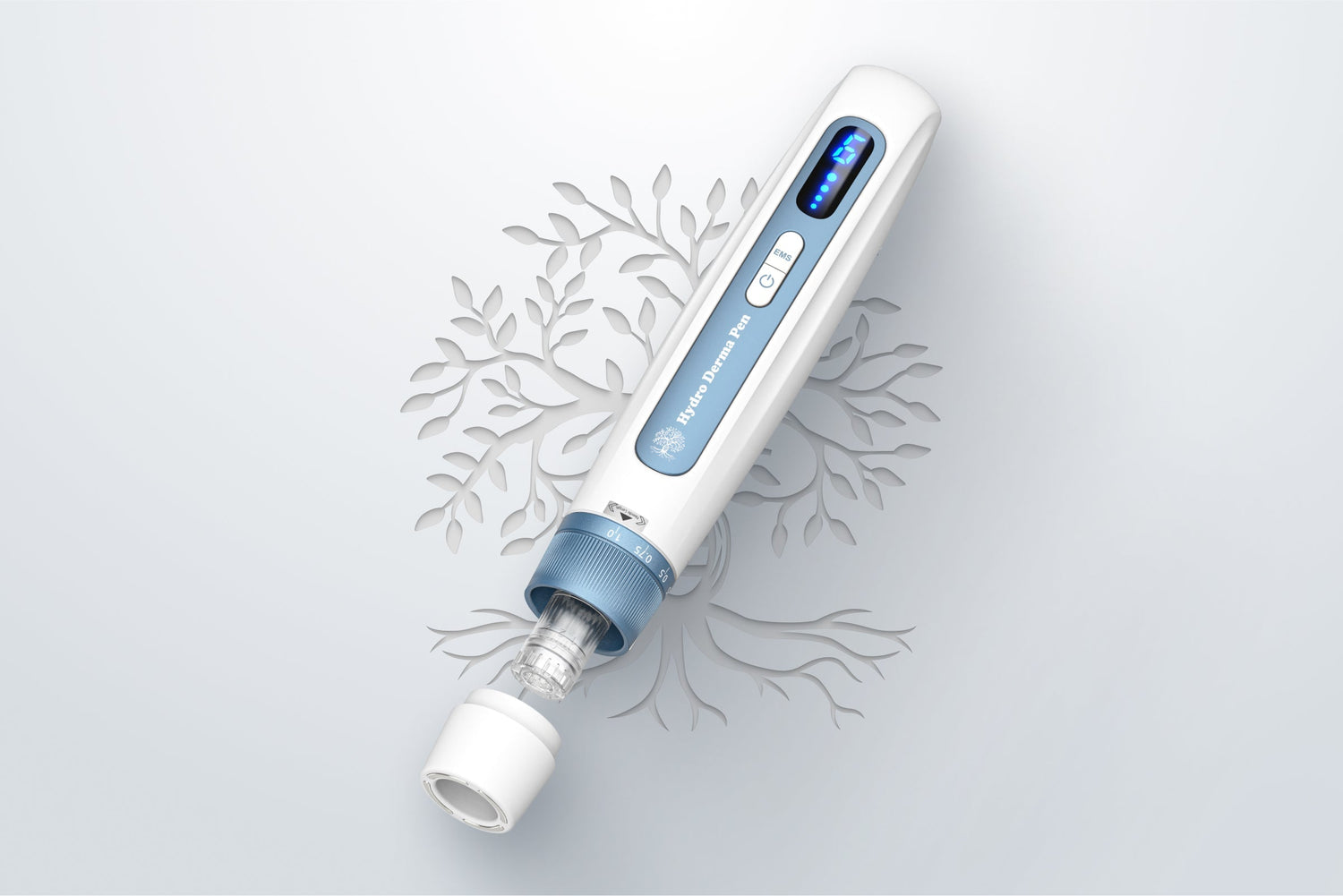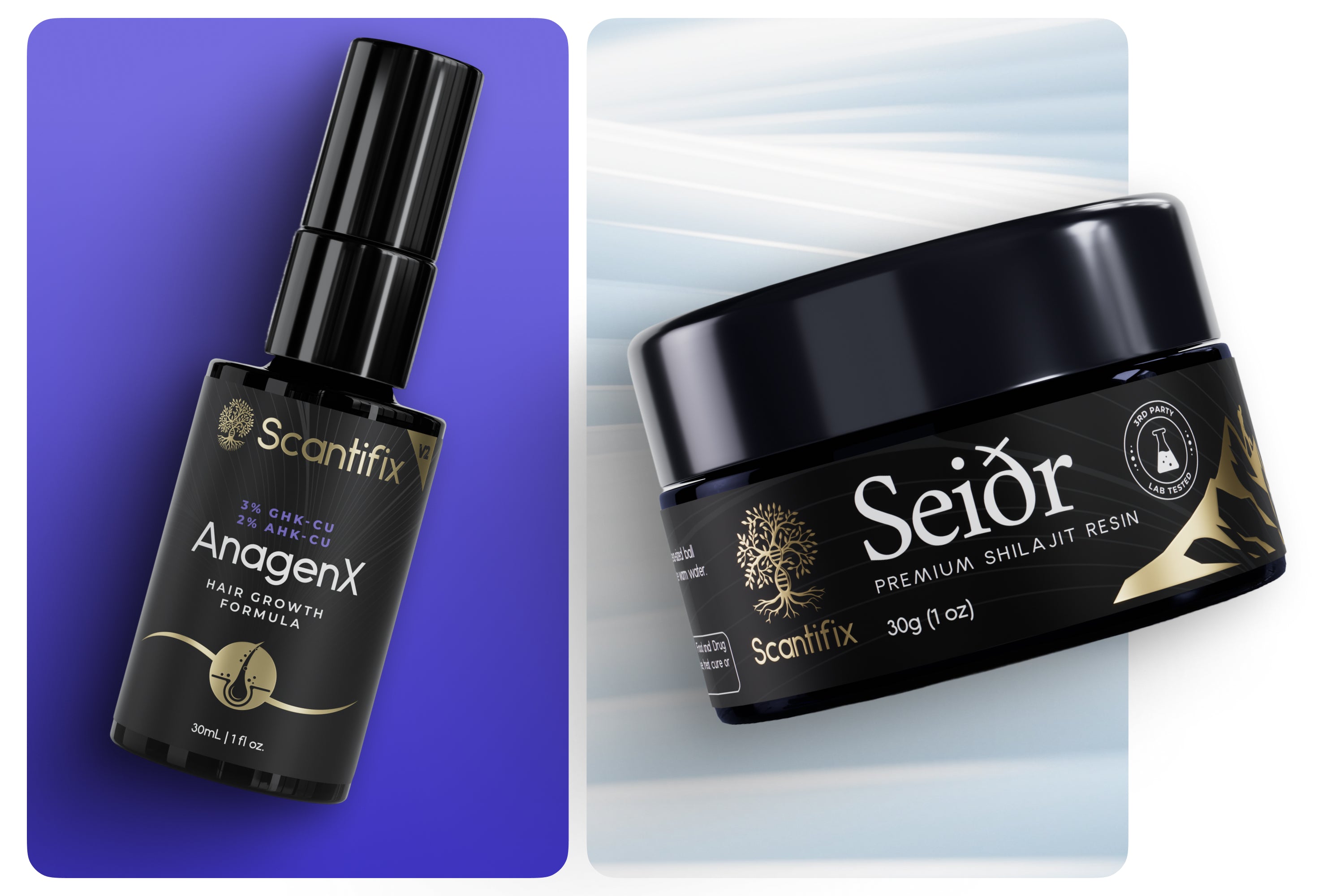With clinically-backed enhancements and smarter engineering, at-home microneedling pens now offer levels of precision, safety, and versatility that rival professional equipment.
The best at home microneedling devices incorporate advanced features that help provide professional results tailored to your specific skin goals. From customizable needle depths and nanoneedling modes to EMS stimulation and integrated serum delivery, these technologies work together to elevate microneedling treatments. Tools like the Hydroderma Pen QS are built around this advanced functionality, making it easier to achieve measurable improvements from home.
Let’s explore how and why microneedling devices have improved and which features you should look for when choosing a device.
The Evolution of Microneedling Devices
Microneedling began with simple dermarollers—manual tools with fixed needles that punctured the skin as they rolled. While effective to some degree, they lacked precision and carried a higher risk of irritation. The introduction of motorized microneedling pens marked a significant step forward. By vertically stamping the skin at controlled depths and speeds, these devices reduced trauma and improved uniformity.
Later, nanoneedling was introduced as a direct response to the growing demand for gentler treatments. This technique uses microscopic tips to target only the uppermost layer of skin, enhancing serum absorption and smoothing surface texture without triggering inflammation. The shift toward customizable depth settings was a major leap in safety and personalization, making it easier to align treatment intensity with specific skin concerns.
More recently, microneedling devices have continued to evolve beyond needles alone. Features like electrical muscle stimulation (EMS) and automated serum infusion are now being integrated into select systems, enhancing the way microneedling supports skin regeneration, firmness, and ingredient delivery. These innovations are what define the latest generation of multifunctional microneedling tools—where depth control, surface stimulation, and ingredient delivery all come together for more effective, customizable treatments.
Adjustable Needle Depths
Microneedling works by creating controlled micro-injuries that stimulate the skin’s natural repair mechanisms, including collagen and elastin production. However, not all concerns require the same depth of penetration. That’s where adjustable needle settings become helpful.
-
- Microneedling depths typically range from 0.25 mm to 2.5 mm and reach into the dermis, making them effective for treating wrinkles, acne scars, and skin laxity.
- Nanoneedling, by contrast, usually stays around 0.15 mm or less and remains within the epidermis. It’s ideal for improving tone, hydration, and fine lines with virtually no downtime.
Being able to choose between microneedling and nanoneedling makes it easier to treat different concerns without over-treating or irritating the skin. Deeper microneedling can target texture and scarring, while nanoneedling is better for delicate areas or ongoing maintenance. Studies confirm that shorter needle lengths (0.15mm or less) are specifically recommended for thin-skinned areas such as around the eyes and mouth, making nanoneedling an evidence-based choice for treating delicate facial areas safely and effectively (Singh & Yadav, 2016).
Nanoneedling also creates tiny channels that help your skin absorb serums—like peptides, antioxidants, and hyaluronic acid—up to 12 times better than normal, all without irritation (Osman-Ponchet et al., 2018).
The Hydroderma Pen QS supports both microneedling and nanoneedling, giving you the power to customize treatments based on your skin’s needs.
Microneedling vs. Nanoneedling: Quick Comparison

Microneedling with EMS
Electrical Muscle Stimulation (EMS) is commonly used in physical therapy and facial toning devices. In skincare, it delivers low-level electrical pulses that activate underlying facial muscles, improving tone, circulation, and lymphatic drainage.
In an 8-week split-face trial, high-frequency EMS significantly improved skin elasticity, reduced wrinkles and sagging, and contributed to overall facial appearance rejuvenation compared to a control side. (Omatsu et al., 2024).
When microneedling is combined with EMS, the result is twofold: stimulation of the dermis through micro-injury to boost collagen production and skin renewal, and activation of muscle fibers for improved firmness and structural support. This dual-action approach addresses both surface-level texture and deeper facial sagging, which is especially relevant in aging skin.
The Hydroderma Pen QS features a 4-pole EMS system designed to engage facial muscles while you treat the skin, offering one of the most complete microneedling with EMS experiences available in an at-home format.
Serum Infusion Systems
Post-microneedling, the skin enters a highly receptive state. Research shows that microchannels formed by the needles allow active ingredients in topical skincare products to penetrate more deeply than they would through intact skin, enhancing delivery of active ingredients in skincare serums (Osman-Ponchet et al., 2018).
However, traditional manual application can be inconsistent, and contamination is a risk. Microneedling devices equipped with automated serum infusion systems address these concerns by applying the product directly during treatment. Active ingredients are delivered while microchannels are still open, maximizing absorption and minimizing waste. And because the serum is dispensed through a closed system, it minimizes contact with air or hands, reducing the risk of contamination during application.
The best at-home microneedling devices integrate serum delivery into the treatment head, allowing peptides, hyaluronic acid, and other regenerative actives to be applied when your skin is most primed to absorb them.
How to Choose the Best Microneedling Pen for Your Skin Goals
Not all devices are created equal, and the right tool depends on your skin’s specific needs. Here’s how key features align with common concerns:
-
- Fine lines and dullness: Look for nanoneedling capability and serum infusion.
- Acne scarring and deeper wrinkles: Prioritize devices with deeper microneedling settings (up to 2.5 mm).
- Loss of firmness: Opt for models that combine microneedling with EMS for muscle engagement.
Other essential features to consider include:
-
- Adjustable depth control for treatment precision
- Hygienic cartridge system to ensure safety
- Compatibility with pharmaceutical-grade serums
- Durable construction and clear documentation
Hydroderma Pen QS: Investing in Smart, Science-Backed Technology
The best at home microneedling devices now combine multiple treatment modes into one system, offering a more complete approach to skin rejuvenation and eliminating the need for multiple tools or steps.
Our Hydroderma Pen QS checks all of the boxes. It offers:
-
- Microneedling and nanoneedling adjustability for precise treatment depth based on your goals
- Built-in EMS to support firmer, more lifted skin
- Integrated serum infusion to optimize active ingredient delivery
- Safe, hygienic cartridges and an easy-to-use interface for at-home confidence
This multifunctionality isn't just about convenience—it’s about how multiple technologies work together to amplify results, addressing different layers of the skin in a single, coordinated treatment. The Hydroderma Pen QS reflects the direction of advanced microneedling technology: safer, smarter, and engineered for real results.
References
Omatsu, J., Yamashita, T., Mori, T., Osuji, Y., Kawanabe, R., Kuzumi, A., Yoshizaki, A., Yokota, T., Yamazaki, K., Sato, S., & Yoshizaki, A. (2024). Neuromuscular electrical stimulation for facial wrinkles and sagging: The 8‐week prospective, split‐face, controlled trial in Asians. Journal of Cosmetic Dermatology, 23(10), 3222-3233. https://doi.org/10.1111/jocd.16403
Osman-Ponchet, H., Alriquet, M., Kouidhi, M., Caprasse, M., Delattre, C., & Pierre, G. (2018). Use of microneedle device to enhance dermal absorption: study on ex vivo human skin. Journal of Dermatology and Cosmetology, 2(1), 26-28. https://doi.org/10.15406/jdc.2018.02.00032
Singh, A., & Yadav, S. (2016). Microneedling: Advances and widening horizons. Indian Dermatology Online Journal, 7(4), 244-254. https://doi.org/10.4103/2229-5178.185468





Leave a comment
All comments are moderated before being published.
This site is protected by hCaptcha and the hCaptcha Privacy Policy and Terms of Service apply.